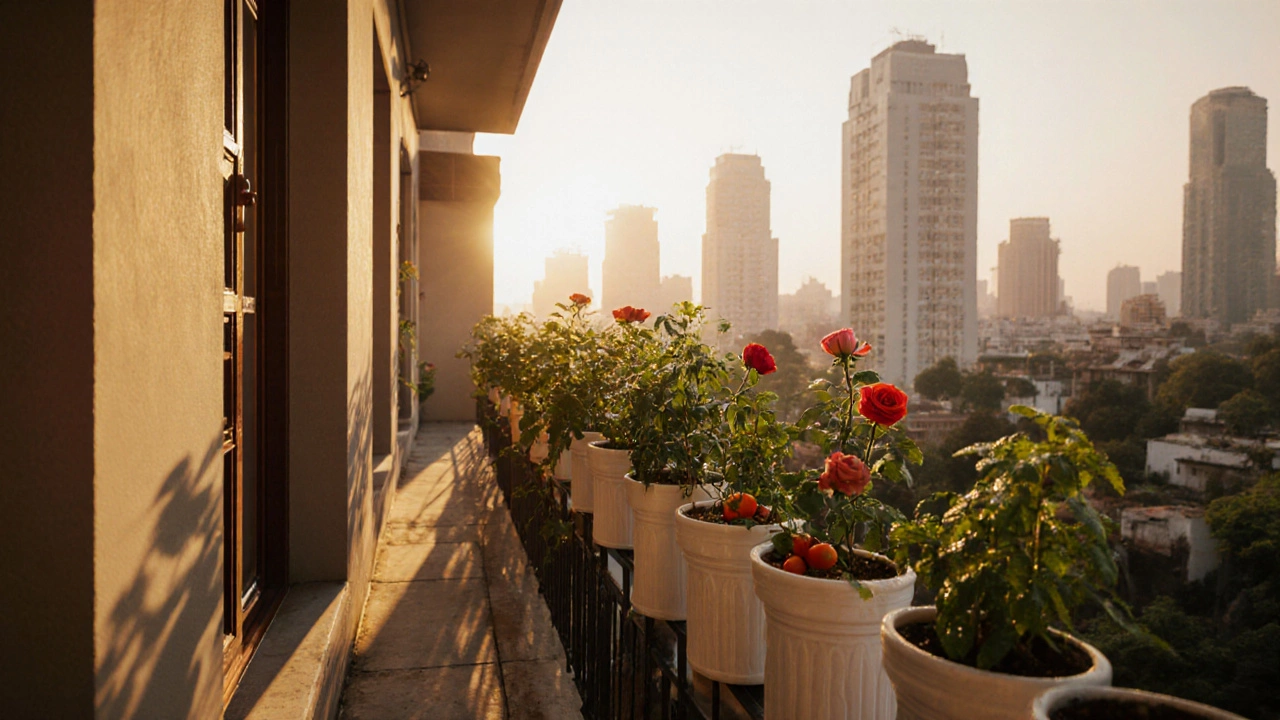Learn which balcony direction captures the most sunlight, how latitude and seasonal sun paths affect light, and get practical tips for choosing plants and maximizing exposure.
Optimal Balcony Facing: Best Sun Direction for Indian Balcony Gardens
When you're growing plants on a balcony in India, the optimal balcony facing, the direction your balcony opens to that determines sunlight exposure and microclimate conditions. Also known as balcony orientation, it's not just about aesthetics—it’s the difference between lush blooms and wilting leaves. In most Indian cities, a north-facing balcony gets soft, indirect light all day, perfect for shade-loving plants like ferns and peace lilies. But if you want tomatoes, chillies, or marigolds to thrive, you need more sun. That’s where east and west faces come in. An east-facing balcony catches the gentle morning sun, ideal for herbs like basil and mint, while a west-facing balcony gets harsh afternoon heat—great for succulents and cacti, but deadly for hydrangeas unless shielded.
The sun exposure for plants, how much direct sunlight different species receive during the day changes dramatically across seasons. In summer, the sun is high and intense, especially from noon to 4 PM. That’s why many gardeners in Delhi or Chennai avoid south-facing balconies—they turn into ovens. But in winter, when the sun is lower, even a north-facing balcony gets enough light for leafy greens. The balcony gardening, the practice of growing plants in limited urban spaces like balconies and terraces isn’t about having the biggest space—it’s about matching the right plants to the right light. A west-facing balcony can support flowering plants like zinnias if you use shade cloth or tall pots to block the harshest rays. Meanwhile, a north-facing one can still grow coriander, spinach, or even dwarf citrus trees if you pick the right varieties.
Wind matters too. Balconies on the top floor often catch strong winds, especially in coastal cities like Mumbai or Kolkata. That’s why many gardeners use trellises or windbreaks—not just for climbing plants, but to protect delicate blooms. And don’t forget heat reflection. Concrete walls, metal railings, and dark tiles can radiate heat after sunset, raising the temperature around your pots by 5–10°C. That’s why shallow pots and light-colored containers are smarter choices. You’re not just picking a spot—you’re engineering a mini ecosystem.
What you’ll find below are real, tested tips from gardeners who’ve learned the hard way—where not to plant hydrangeas, which plants bloom nonstop in Indian heat, how to fix waterlogged soil in small containers, and why some balcony gardens fail before they even start. These aren’t theory pages. They’re the kind of advice you’d get from a neighbor who’s been doing this for years. Whether you’re growing herbs on a 5x5 ft balcony in Bangalore or trying to keep flowers alive on a high-rise in Jaipur, the right facing makes all the difference.
